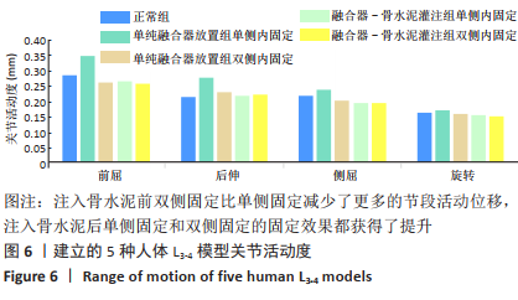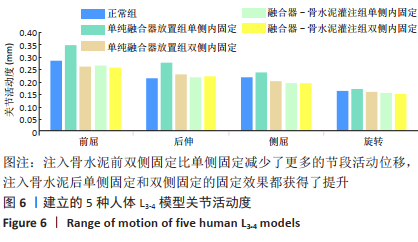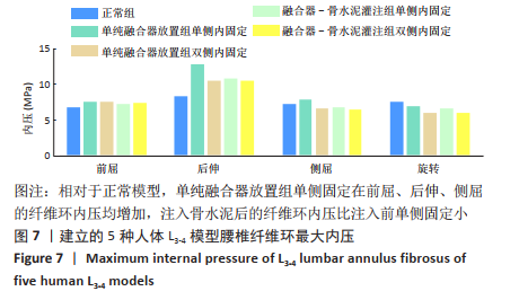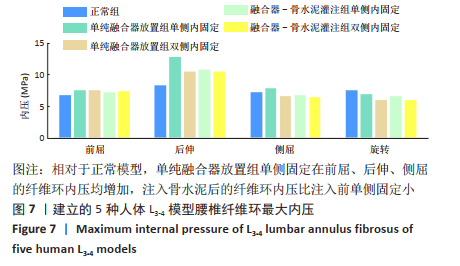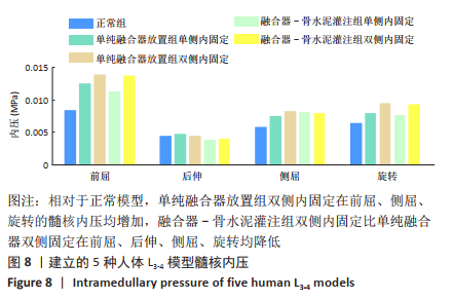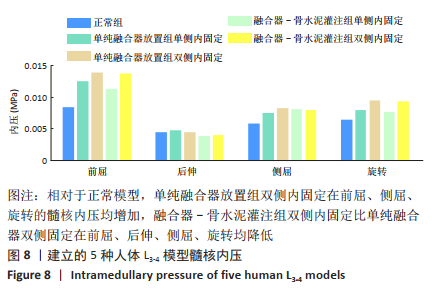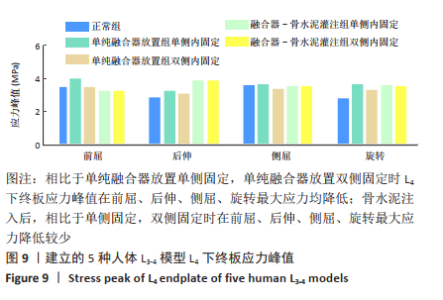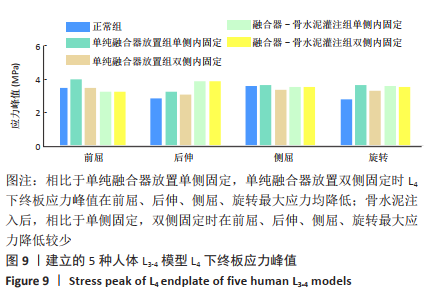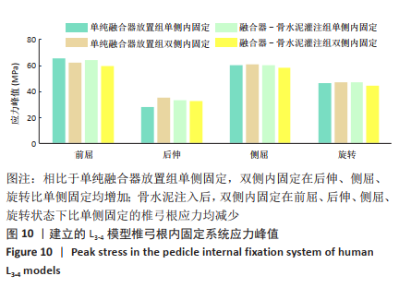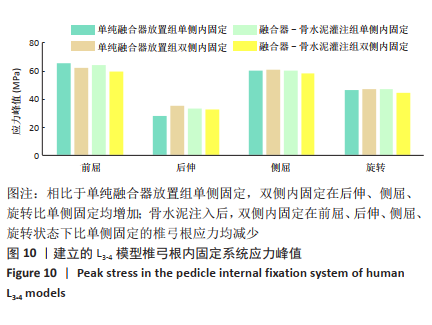[1] GOEL VK, GRAUER JN, PATEL TCH, et al. Effects of charité artificial disc on the implanted and adjacent spinal segments mechanics using a hybrid testing protocol. Spine (Phila Pa 1976). 2005;30(24):2755-2764.
[2] 颜文涛,赵改平,方新果,等.人体腰椎L4~5节段有限元建模及分析[J].生物医学工程学杂志,2014,31(3):612-618.
[3] CHEN HH, CHEUNG HH, WANG WK,et al. Biomechanical Analysis of Unilateral Fixation With Interbody Cages. Spine (Phila Pa 1976). 2005; 30(4):E92-96.
[4] FANG G, LIN Y, WU J, et al. Biomechanical Comparison of Stand-Alone and Bilateral Pedicle Screw Fixation for Oblique Lumbar Interbody Fusion Surgery-A Finite Element Analysis. World Neurosurg. 2020;141: e204-e212.
[5] CHEN YL,LAI OJ,WANG Y,et al. The biomechanical study of a modified lumbar interbody fusion—crenel lateral interbody fusion (CLIF): a three-dimensional finite-element analysis. Comput Methods Biomech Biomed Engin. 2020;23(9):548-555.
[6] FUCHS KF, HEILIG P, MCDONOGH M, et al.Cement-augmented screw fixation for calcaneal fracture treatment: a biomechanical study comparing two injectable bone substitutes. J Orthop Surg Res. 2020; 15(1):533.
[7] ROHLMANN A, NELLER S, BERGMANN G,et al. Effect of an internal fixator and a bone graft on intersegmental spinal motion and intradiscal pressure in the adjacent regions. Eur Spine J. 2001;10(4):301-308.
[8] ZANDER T, ROHLMANN A, CALISSE J, et al. Bergmann. Estimation of muscle forces in the lumbar spine during upper-body inclination. 2001;16 Suppl 1:S73-80.
[9] LIANG Y, ZHAO Y, XU S, et al. Effects of Different Orientations of Cage Implantation on Lumbar Interbody Fusion. World Neurosurg. 2020;140:e97-e104.
[10] KALE A, OZ II, ONK A, et al. Unilaterally posterior lumbar interbody fusion with double expandable peek cages without pedicle screw support for lumbar disc herniation. Neurol Neurochir Pol. 2017;51(1): 53-59.
[11] CHATHAM LS, PATEL VV, YAKACKI CM, et al. Interbody Spacer Material Properties and Design Conformity for Reducing Subsidence During Lumbar Interbody Fusion. J Biomech Eng. 2017;139(5):0510051-0510058.
[12] 李春江,田野,黄永麟.NiTi记忆合金支架应用的现状和未来[J].心血管病学进展,1998,19(3):169-171.
[13] ANDANI MT, ANDERSON W, ELAHINIA M. Design, modeling and experimental evaluation of a minimally invasive cage for spinal fusion surgery utilizing superelastic Nitinol hinges. Journal of Intelligent Material Systems and Structures. 2015;26(6):631-638.
[14] AO脊柱内固定学会的专业标准读物——《AO脊柱手册》简体中文版[J].脊柱外科杂志,2010,8(4):206.
[15] 庞胤,尹帅,张海峰,等.退变对腰椎L4~5节段椎间盘生物力学的影响[J].山东医药,2021,61(4):55-57.
[16] 陆向东,赵轶波,王少伟,等.腰椎单侧与双侧内固定后的生物力学特征比较[J].中国组织工程研究,2020,24(12):1886-1890.
[17] GRANT JP, OXLAND TR, DVORAK MF.Mapping the Structural Properties of the Lumbosacral Vertebral Endplates. Spine (Phila Pa 1976). 2001; 26(8):889-896.
[18] MUTHU S, CHELLAMUTHU G. How Safe Is Unilateral Pedicle Screw Fixation in Lumbar Fusion Surgery for Management of 2-Level Lumbar Degenerative Disorders Compared with Bilateral Pedicle Screw Fixation? Meta-analysis of Randomized Controlled Trials. World Neurosurg. 2020; 140:357-368. |
